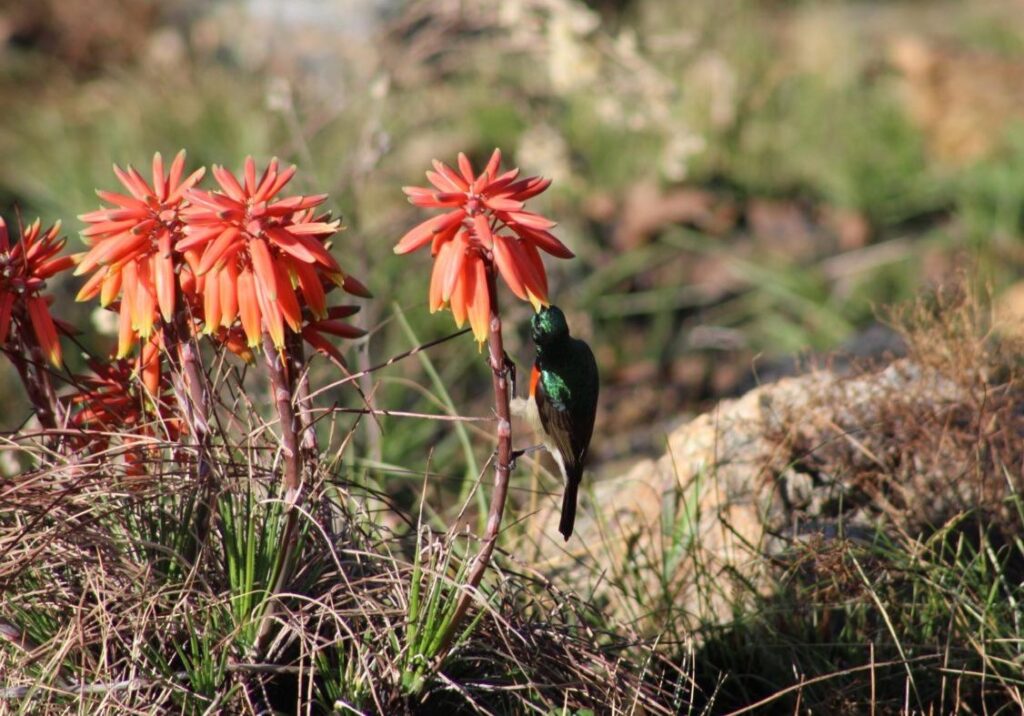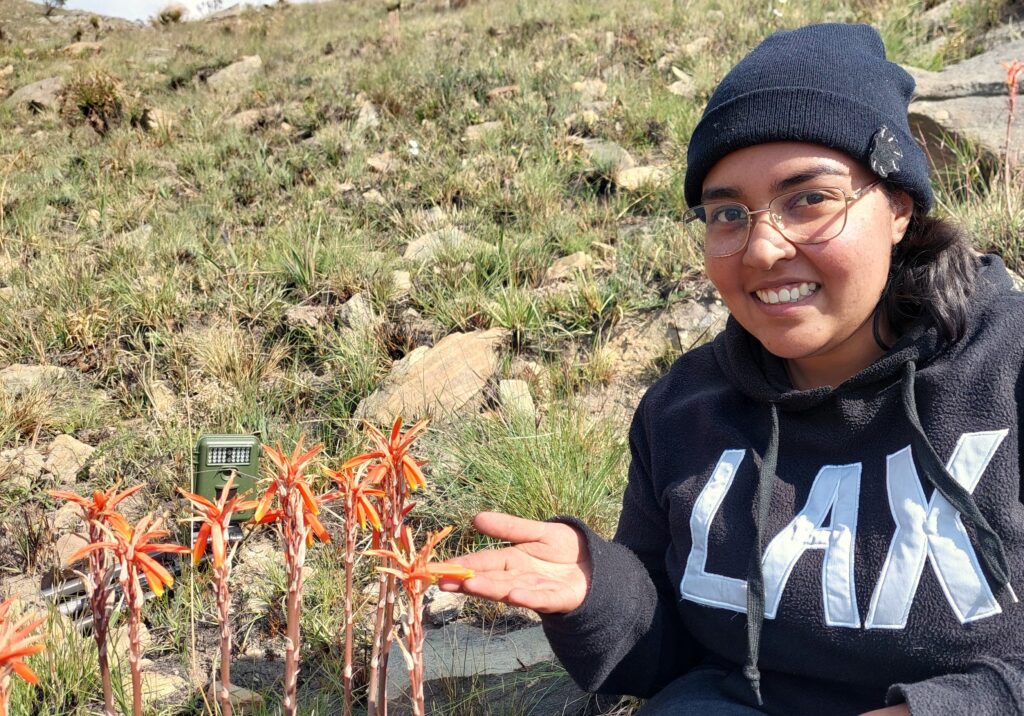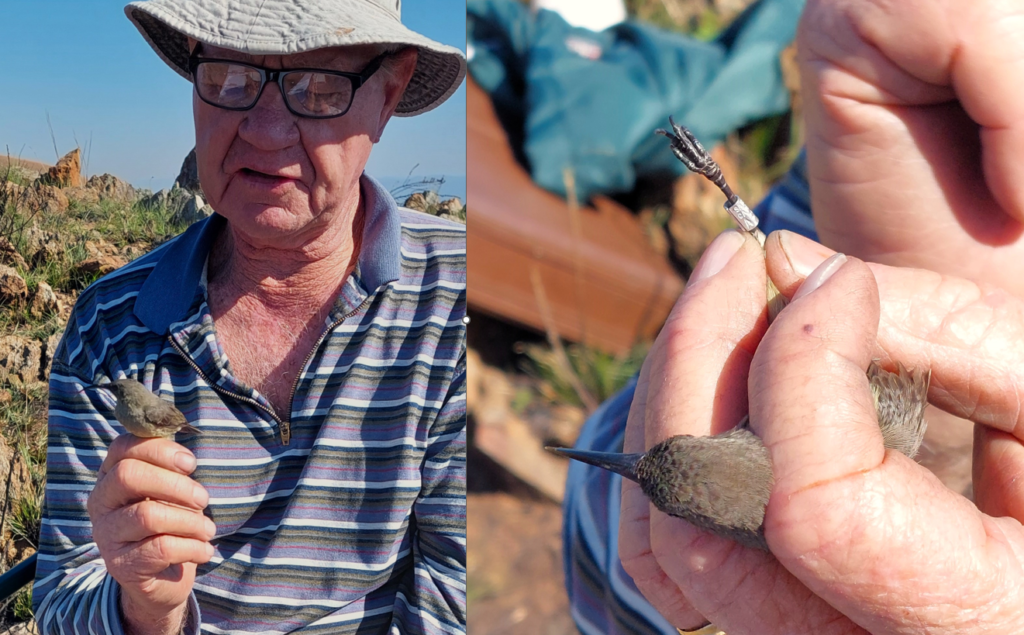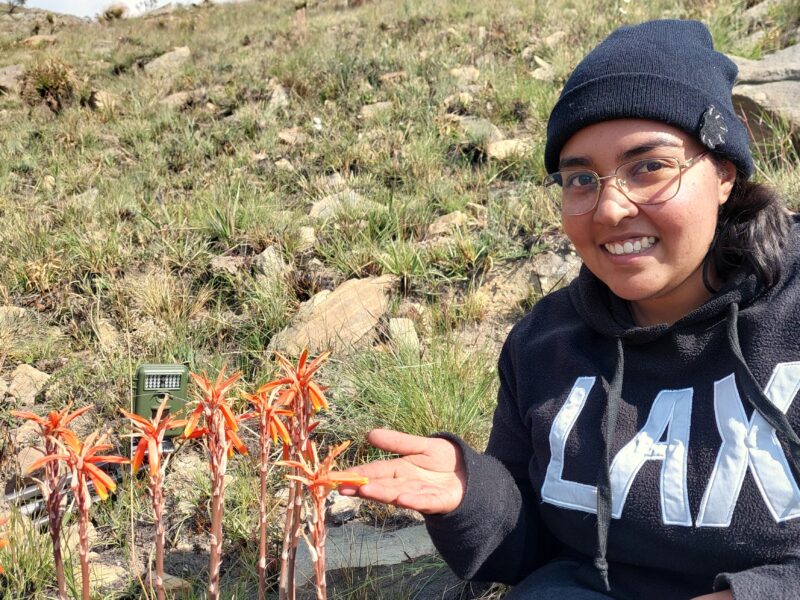
A male greater double collared sunbird feeding on the nectar of an Aloe chortolirioides var. chortolirioides flower. It was photographed with one of Verona’s static trail cameras.
Who is the most successful pollinator of the highly threatened grass aloe species of Mountainlands? Verona Govender, a post-graduate student from Wits University has for the past two years been working on the answer as part of per studies towards her doctoral research degree. Last week, she returned to learn more about possible bird pollinators of the Near Threatened species, Aloe chortolirioides var. chortolirioides. She has already honed her knowledge about the insect pollinators.

Verona with an Aloe chrotolirioides var. chortolirioides plant.
She aimed to photograph and catch the sunbirds and sugarbirds that are likely pollinators to test the amount of pollen that they carry compared to the insect pollinators. Fire stimulates Aloe chortoliriodes var. chortolirioides to bloom and she had to act quickly to be on the reserve at the right time.
Don Williamson, a volunteer from Birdlife Lowveld, assisted her with the catching and identification of the birds. Together, they had much fun erecting 3 bird nets in the steep, rocky grassland and it was just a matter of time before two female greater double collared sunbirds and a buff-streaked chat were caught. The buff-streaked chat did not have any pollen on it and is likely not one of the pollinators. But the sunbirds did have and Verona will now analyze it to establish if it was from this specific Aloe species.

Don Williamson gently handling a female greater double collared sunbird that he has ringed.
The sunbirds are dainty and luckily, due to years of experience, Don knew how to carefully assess, weigh and measure them. He also shared his skills and knowledge with Verona. “Working with Don and learning about the birds that interact with Aloe chortolirioides was an amazing experience, one of the highlights of my degree! Handling the birds for measurements and release was terrifying but definitely more exciting,” said Verona.
He also marked them by carefully by placing a numbered metal ring on a leg of each bird before releasing them again. The data gathered will be submitted to SAFRING, the South African Bird Ringing Unit at the University of Cape Town. When a ringed bird is caught in future, more data can again be submitted to SAFRING scientists who study the life cycle, habits, populations and movements of the birds.
Habitat changes affect not only plant populations but also their pollinators. The disruption of effective pollinator systems can have irreversible consequences for ecological processes. We keenly follow Verona’s research as it will lead to a better understanding of the different species involved and improved management and conservation of the threatened grassland aloe populations.

Verona busy adjusting one of the nets with which the birds were caught.

